On Tuesday, September 1st Titan Books releases a new coffee table book all about the art of Star Trek: The Motion Picture. TrekMovie spoke with the authors and has exclusive imagery from the book for a preview.
Star Trek: The Motion Picture – Inside the Art and Visual Effects
Starfleet spent eighteen months redesigning and refitting the Enterprise before launching the legendary ship on a mission to intercept a giant cloud. But a new book detailing the art and visual effects work of that adventure took considerably longer to come to fruition.
“I pitched it to Titan Books at least three or four years ago,” co-author Jeff Bond told TrekMovie. “It actually goes back further than that,” added co-author Gene Kozicki, who cites the 2014 book Return to Tomorrow, Preston Neal Jones’ oral history of Star Trek—The Motion Picture, as his starting point.
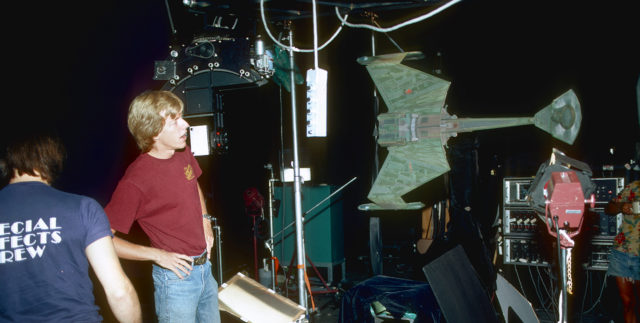
From Star Trek: The Motion Picture: The Art and Visual Effects (TM & © 2020 CBS Studios Inc. © 2020 Paramount Pictures Corp. STAR TREK and related marks and logos are trademarks of CBS Studios Inc. All Rights Reserved)
Kozicki, a 30+ year screen industry veteran who’s worked on visual effects for dozens of films, appreciated the many interviews included in Return to Tomorrow. But he also immediately noticed a few key omissions, specifically the lack of any input from Robert Abel & Associates, the special effects firm that was famously dismissed during the movie’s production. And maybe even more than that, his other complaint about the book was summed up in a single question: “Where are the pictures?”

From Star Trek: The Motion Picture: The Art and Visual Effects (TM & © 2020 CBS Studios Inc. © 2020 Paramount Pictures Corp. STAR TREK and related marks and logos are trademarks of CBS Studios Inc. All Rights Reserved)
Using his own personal collection as a starting point, Kozicki teamed with his friend Jeff Bond to pitch a new book idea to Titan, for whom Bond had already written several books, including Planet of the Apes: The Evolution of the Legend, The World of the Orville, and The Art of Star Trek: The Kelvin Timeline.
“I’d already done some Star Trek-related work for them,” Bond said. “In the context of discussing what a next project would be, this was a pretty obvious one, because the anniversary of the movie was coming up. And by that time, I had gotten to know Gene and knew that he was going to bring his vast expertise to this book. He’s a visual effects producer and has worked for a long time with the Visual Effects Society and is a genius at preserving and excavating all that history. And he has contacts with everybody.”
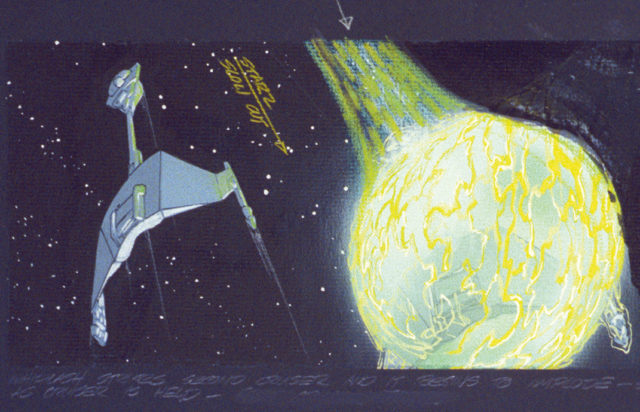
From Star Trek: The Motion Picture: The Art and Visual Effects (TM & © 2020 CBS Studios Inc. © 2020 Paramount Pictures Corp. STAR TREK and related marks and logos are trademarks of CBS Studios Inc. All Rights Reserved)
Using contacts they’d both made over the years, Bond and Kozicki conducted dozens of new interviews with such legendary figures as Douglas Trumbull, John Dykstra, Richard Yuricich, Andy Probert, and Syd Mead. They also spoke to some overlooked contributors, people like Richard Taylor, one of the effects artists who worked with Robert Abel & Associates.
“I felt that it was time to talk about that,” Kozicki said. “Talk about the positive contributions that Abel and his organization did.” Along with finding new insights into the production through original interviews, the authors tapped numerous sources for artwork, including scouring both the CBS and Paramount archives.
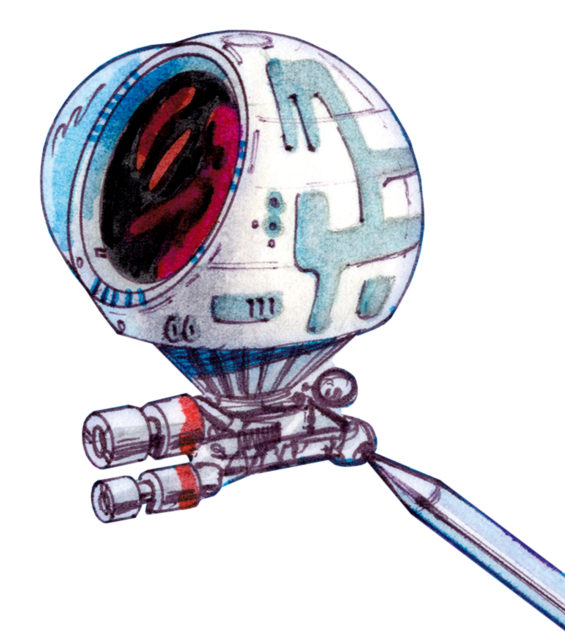
From Star Trek: The Motion Picture: The Art and Visual Effects (TM & © 2020 CBS Studios Inc. © 2020 Paramount Pictures Corp. STAR TREK and related marks and logos are trademarks of CBS Studios Inc. All Rights Reserved)
“The Star Trek division, John Van Citters, was extremely cooperative,” said Bond. “They allowed us unfettered access.” Paramount even provided the authors with a thumb drive containing thousands of high-resolution production photos. “There were 27,192 photos on this drive,” Kozicki said. “It’s like they have given us access to pretty much every photo they have in their archives.”
With this embarrassment of riches, the authors felt like part of their chore was trying to find photos that fans haven’t seen before, which was quite a challenge considering the material is over 40 years old. In the end, they were able to publish over 400 photos in a big, 192 page, coffee-table art book. “It deserves to be bigger,” said Bond, “because it’s the first Star Trek film and it’s the most visually expansive of all those movies. It’s groundbreaking in its way, and it really deserves to have a big book like this.”
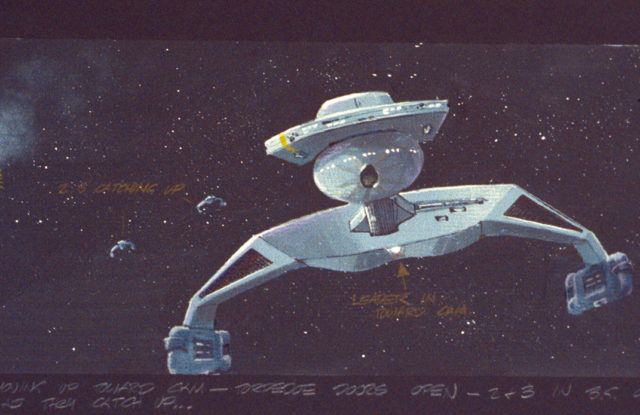
From Star Trek: The Motion Picture: The Art and Visual Effects (TM & © 2020 CBS Studios Inc. © 2020 Paramount Pictures Corp. STAR TREK and related marks and logos are trademarks of CBS Studios Inc. All Rights Reserved)
Available Tuesday
All the artwork above and much much more is available in Star Trek: The Motion Picture – Inside the Art and Visual Effects by Jeff Bond and Gene Kozicki, published by Titan Books. The 176-page hardcover coffee table book will be released on September 1, 2020. It retails for $50.00 but you can pre-order it at Amazon for $39.99.
Keep up with all the Star Trek merchandise news and reviews at TrekMovie.com.

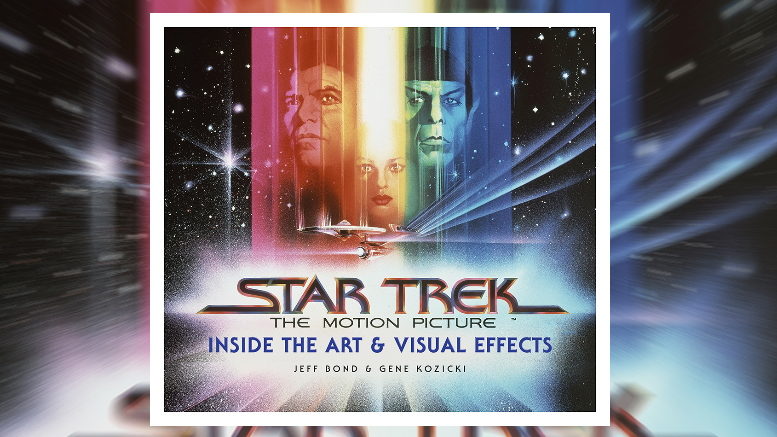
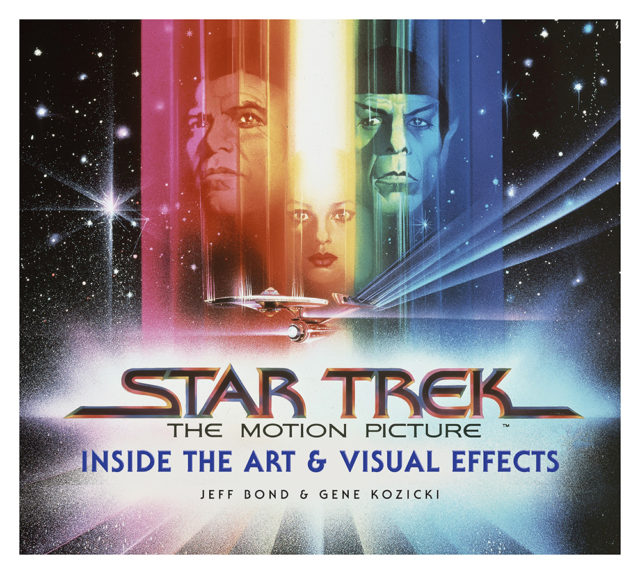

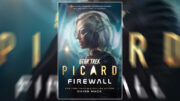
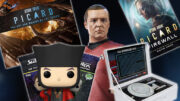
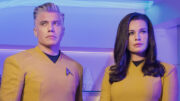
Ooh, nice. They’ll sell me one of those.
ST:TMP is still my favorite Star Trek movie. I pre-ordered this book a few weeks ago and it’s scheduled to be delivered on September 1. Can’t wait.
Star Trek: The Motion Picture is a sci-fi classic. This is really cool.
You must have to have an ‘in’ to get somewhere with Titan.
I’m looking forward to this as well. I do hope there are LOTS of new things. As for the Trumbull interview, we should find out just what exactly he would’ve done with the FX had he had the extra time to do them. I think the quote was adequate effects in time for the release, better FX in Jan and the best possible by Easter. Nothing was said from him regarding this when they did the Director’s Edition and they recorded his interview about the production.
How about stills from the cut footage like the security guard firing the phaser, the Ilia/Scotty exchange in engineering. Storyboards, if any, of the proposed earth scene with McCoy taping up an injured lion’s paw chatting with Kirk. The Nogura/Kirk exchange. I know..not filmed, but it would’ve added more dramatic ooomph for the Kirk character and the desire to be in the Captain’s chair again. In the Return to Tomorrow book, I was reading about how expansive the rec deck was and that they didn’t show it all on film, although its vast interior and full crew complement did showcase its cinematic quality, nonetheless.
With the pandemic crisis, I miss going to the movies, especially sci-fi movies. I hope one day Paramount spends a few $ and does an IMAX of TMP because it deserves it and with the director edition edits and its new soundtrack (but restore the Klaxon alarm..plasma weapon and warp drive sound fx), it would be amazing to experience. I remember the opening Klingon ship flyover and turn sitting close to the screen, you had a real sense of mass, movement and detail.
The 40th anniversary release did pretty well considering its 1 or 2 day showing with lousy digital copies. There have been restoration efforts made on far lesser movies, TMP deserves it for future posterity!
Those Klingon ships look fantastic. Everything look fantastic on the exterior side in TMP, and most of the sets (though the uniforms would be better in II, and I liked the active displays behind Kirk vs. the rather bland science station; though in their defence that science station is pretty active compared to a door in DIS). A highlight in Discovery was the use of some of the well thought out symbology especially on the Big E from TMP (like that “Red Alert” animation which still is light years ahead of any display post 1981 in terms of epicness).
Why Discovery didn’t use D-6/D-7 battlecrusiers when it would have made sense in favor of ugly forgettable designs is beyond me.
TMP was actually my favorite Trek movie for 20 years as it looked and felt epic, it was only the last ten years where I now feel II is superior (it’s more fun).
What’s David Spade doing in that second picture?
The Special Effects for this film were fantastic. I always wanted to see it in 70mm. As intended by Doug Trumbull but no prints beyond one were ever made. Because of the rush of post production we were lucky to even get the 35mm version before 1980. It would be a dream come true for a 4k presentation of the original 65mm effects and the theatrical version of the movie along with the directors cut.
I think you are confused about what that 70mm print would have to offer us now in the present era.
You yourself noted it was expediently done. The film was edited and mastered in 35mm, and the 70mm print was just a blowup run off that. Even if that 70mm print is never found another of equivalent or dare I say superior quality could easily be run off the restored 35mm master for whatever quality it is that you believe was lost with that original 70mm print.
Don’t get me wrong, in 1979 when waiting in line for the premier I wanted to see the 70mm because its technology offered superior viewing options for that era. I’m just not sure with an 8k rescan of the 35mm looming in the wings that a 70mm blowup print could offer anything more?
In fact, it’s likely more valuable as an auditory archive as the increased physical real estate of 70mm allowed a magnetic stripe on which 6 discrete channels of sound could be recorded for playback.
Unless I am totally off-base, the 65mm film elements would have been used directly to strike the 70mm print, combined with 35mm blowup elements of the live-action. That’s always been my belief.
no, on 2nd thought you’re probably right. The shooting-fx-in65 thing was about protecting the quality when doing the necessary duplication for optical printing, so it would match with the 35.That’s what happened on CE3K. Still, I double-envy the writer from PLAYBOY who got to see the original 65mm VFX elements projected.
Interesting book to be sure. Nice to get some different background stories with the visual effects that were something when I saw this back in 1979. I really enjoy enjoyed the movie then and still do today, but I never liked the uniforms though.
What a nice contrast to have this available during this period where we are stuck with this silly and annoying cartoon.
the lost art of great miniatures and great ideas…
Ordered! Love Jeff Bond’s work.
Mine arrived last week and I just got thru reading it. After 40 years, there isn’t a lot about this movie that I don’t know but there were still a few stories, anecdotes and revelations that I was not aware of.
The book does a good job of breaking out and exploring different facets of the movie and many of the people involved. But while it spends a lot of time on certain aspects, like Doug Trumbull and John Dykstra’s teams’ efforts, as well as the many ideas contributed by and ultimate failure of the Robert Abel team, other people and teams are barely mentioned. Brick Price Movie Miniatures, who developed many of the movie’s props are get maybe one line in the whole book; Sam Nicholson and Brian Longbotham, who were responsible for the movie’s lighting effects in engineering and the final V’Ger temple, likewise are only mentioned in passing.
Overall though, it’s a nice, coffee-table edition with lots of photographs (some new, many previously seen) that does a good job of summarizing the movie’s voyage from TV pilot to theatrical film and I’m happy to have it in my collection.
My copy arrived yesterday. So far, so good, and with Jeff Bond on the job, this should be a good’n.